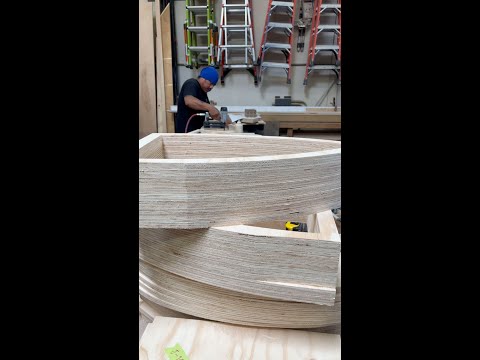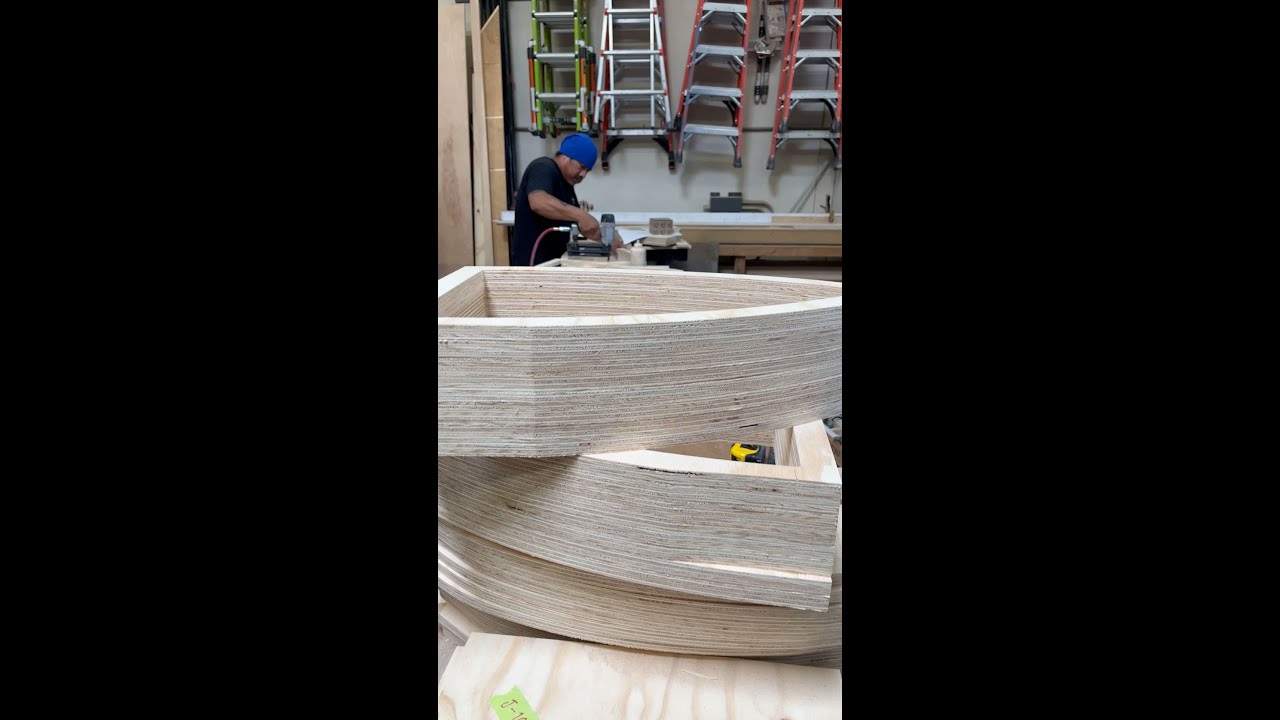Scenic fabrication is the art of transforming ordinary spaces into extraordinary realms. With meticulous attention to detail and expert craftsmanship, scenic fabricators bring imagination to life, creating visually stunning environments that ignite the senses. Each scene is meticulously crafted, meticulously designed, and meticulously built, ensuring an immersive experience for all who step into it. From jaw-dropping backdrops to intricate props, every element is carefully constructed to transport you to a world beyond your wildest dreams.
Through the skillful use of materials, lighting, and special effects, scenic fabricators breathe life into the unimaginable, crafting landscapes that captivate and inspire. Whether it’s an enchanting forest, a bustling cityscape, or a whimsical wonderland, these artisans weave together elements of artistry and engineering to create a fully realized vision.
The process of scenic fabrication is a true labor of love, requiring a fusion of technical expertise and boundless creativity. From initial concept sketches to the final installation, every step is undertaken with unwavering dedication and passion. The result is an immersive and transformative experience that transports you to a different time, place, or even dimension.
Discover the magic of scenic fabrication and unlock a world of endless possibilities. Let your imagination run wild as you explore the artistry and innovation that brings dreams to life. Prepare to be awestruck as you step into a realm where reality and fantasy merge, leaving you with memories that will last a lifetime.

Scenic Fabrication: Bringing Imagination to Life
Scenic fabrication is an intricate process that combines artistry and technical expertise to create stunning visual environments for various mediums such as film, television, theater, and themed attractions. It involves the construction and installation of custom-made scenery, props, and sets that transport audiences into different worlds. Scenic fabrication is a crucial aspect of any production, as it sets the stage for storytelling and enhances the overall viewer experience.
The Process of Scenic Fabrication
Scenic fabrication begins with a concept or design, which is then transformed into a physical reality through a series of meticulous steps. Let’s delve into the main stages of this fascinating process:
1. Conceptualization and Design
The first step in scenic fabrication is creating a comprehensive plan based on the artistic vision of the production. This involves collaborating with designers, directors, and other stakeholders to develop a detailed blueprint for the scenery, props, and sets. Conceptualization and design ensure that every element aligns with the creative vision and practical requirements of the project.
2. Material Selection
Once the design is finalized, material selection becomes a crucial aspect of scenic fabrication. The choice of materials depends on factors such as durability, visual appeal, and budget constraints. Commonly used materials include wood, metal, foam, fabric, and plastics. Experienced scenic fabricators carefully select the appropriate materials to achieve the desired aesthetics and functionality of the final product.
3. Fabrication and Construction
After the design and material selection, the fabrication process begins. Skilled artisans and technicians bring the design to life by meticulously constructing the scenery, props, and sets. This stage involves cutting, shaping, joining, and painting materials to create the desired forms, textures, and finishes. The expertise of scenic fabricators shines during this phase, as they transform raw materials into captivating visual elements.
4. Finishing and Detailing
Once the main construction is complete, scenic fabricators focus on finishing and detailing to enhance the realism and visual impact of the scenic elements. This involves adding textures, colors, and intricate details to make the scenery, props, and sets come alive. Techniques such as painting, aging, distressing, and weathering are employed to create depth and dimension, giving the illusion of authenticity.
5. Installation and Integration
The final step in scenic fabrication is the installation and integration of the finished scenery, props, and sets into the production space. This requires coordination with production crews to ensure seamless integration with lighting, sound, and other technical aspects of the production. Scenic fabricators meticulously position and secure the elements, ensuring they are functional, safe, and aesthetically pleasing.
The Significance of Scenic Fabrication
Scenic fabrication plays a vital role in the success of any production, contributing to its overall visual appeal and storytelling. Here are a few reasons why scenic fabrication is of utmost significance:
1. Immersion and Atmosphere: Scenic fabrication creates immersive environments that transport audiences to different worlds. It sets the mood, establishes the atmosphere, and enhances the overall viewing experience.
2. Visual Storytelling: Scenic elements help convey the narrative visually, adding depth and meaning to the story being told. They serve as visual cues, guiding the audience’s attention and understanding.
3. Branding and Identity: In themed attractions and commercial settings, scenic fabrication helps create a distinctive branding and identity. It reinforces the theme and immerses visitors in a unique experience that aligns with the brand’s image.
4. Versatility and Adaptability: Scenic fabrication is incredibly versatile and adaptable, catering to the specific needs of each production. Whether it’s a realistic historical setting or a fantastical world, scenic fabricators can bring any vision to life.
5. Collaboration and Creativity: The process of scenic fabrication involves collaboration between designers, fabricators, and other creative professionals. It sparks innovation, allowing for the fusion of ideas and expertise to create remarkable visual experiences.
In conclusion, scenic fabrication is an intricate process that combines artistry, technical skill, and collaboration to bring imagination to life. From conceptualization and design to installation and integration, scenic fabricators play a pivotal role in creating captivating visual environments for various mediums. Their expertise in material selection, fabrication, finishing, and detailing ensures that every scenic element contributes to the overall success of the production. So, the next time you find yourself captivated by the visual splendor of a film, television show, or theater production, take a moment to appreciate the incredible artistry and craftsmanship behind the scenes – the world of scenic fabrication.
“Scenic Wall Crafts: A Breathtaking Journey in Seconds”
Video Source : VX DESIGN SOLUTIONS, INC
Scenic Fabrication
Scenic Fabrication
Scenic fabrication is a crucial aspect of creating stunning visual experiences in the world of theatre, film, and events. It involves the construction and assembly of various scenic elements that bring a production to life. From intricate set designs to awe-inspiring props, scenic fabrication requires a combination of artistic vision, technical expertise, and meticulous craftsmanship.
| Scenic Element | Description | Materials Used |
|---|---|---|
| Set Pieces | Set pieces form the foundation of any scenic design. They create the environment in which the story unfolds, ranging from realistic interiors to fantastical landscapes. Set pieces can be static or movable, and they often require skilled carpentry and painting. | Wood, metal, fabrics, paint |
| Props | Props are objects used by actors to enhance the storytelling. They can be anything from small handheld items to large furniture pieces. Props are meticulously crafted to match the period, style, and aesthetic of the production, requiring attention to detail and practical functionality. | Various materials based on the prop (wood, foam, plastics, textiles) |
| Special Effects | Special effects add an extra layer of magic and realism to the production. They can include pyrotechnics, atmospheric effects, mechanical movements, and more. Special effects require innovative engineering, precise timing, and safety considerations. | Various specialized materials (fireworks, fog machines, motors) |
| Backdrop | The backdrop sets the mood and atmosphere of the production. It can be a painted canvas, a digitally printed image, or even a dynamic LED screen. Backdrops often require skilled painters, digital artists, and technicians to achieve the desired visual impact. | Canvas, paint, digital prints, LED screens |
Scenic fabrication is a collaborative process involving a team of designers, technicians, and artisans. Their collective expertise and attention to detail ensure that every scenic element harmoniously contributes to the overall artistic vision. From concept to completion, scenic fabrication is a testament to the power of creativity and craftsmanship in creating captivating visual experiences.

